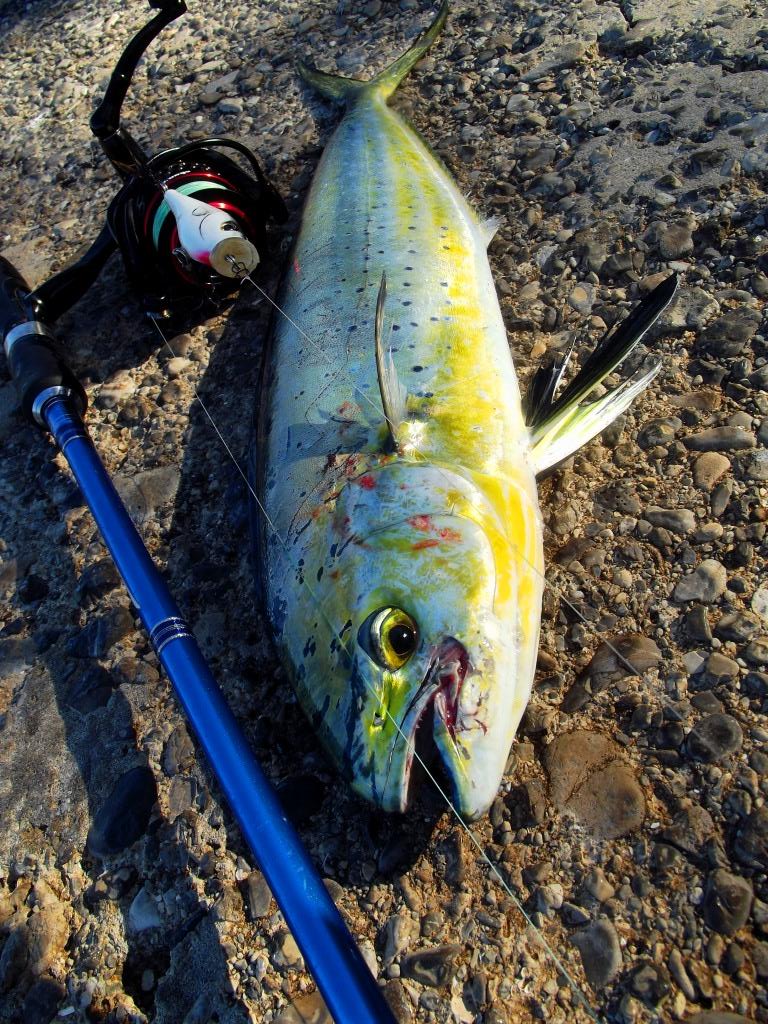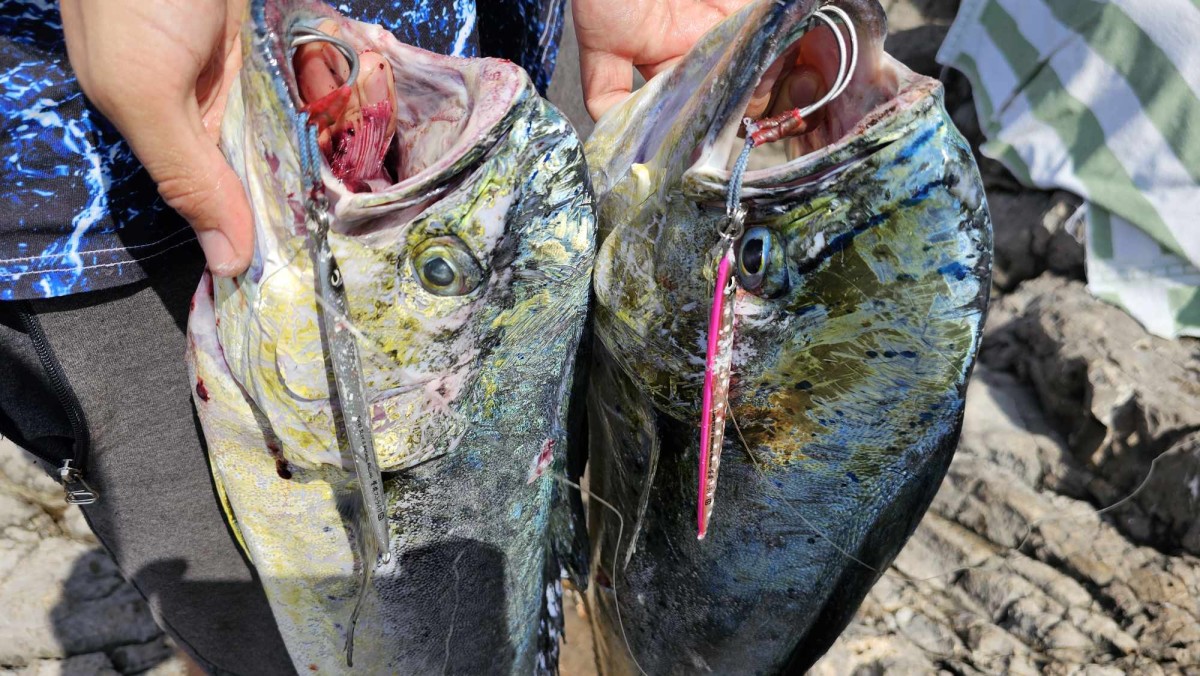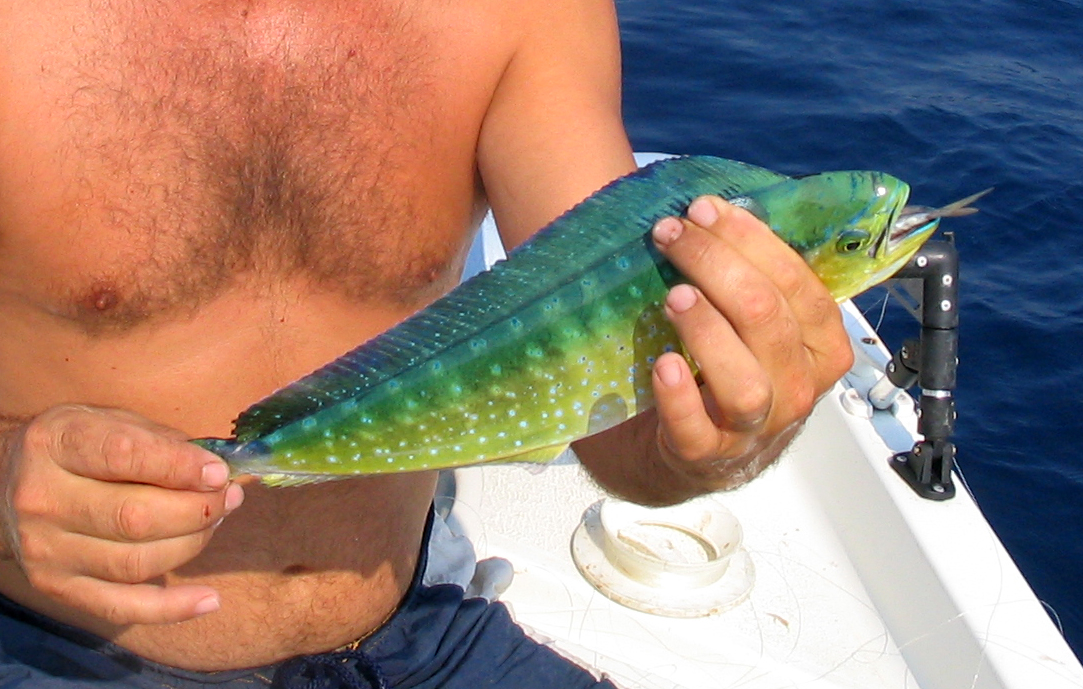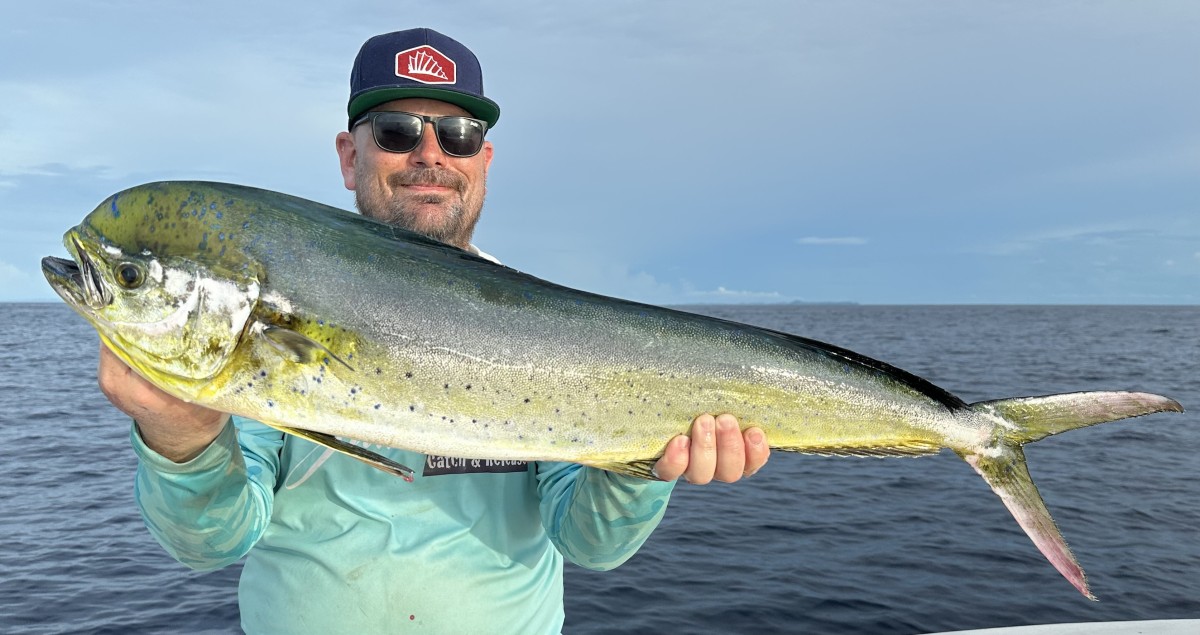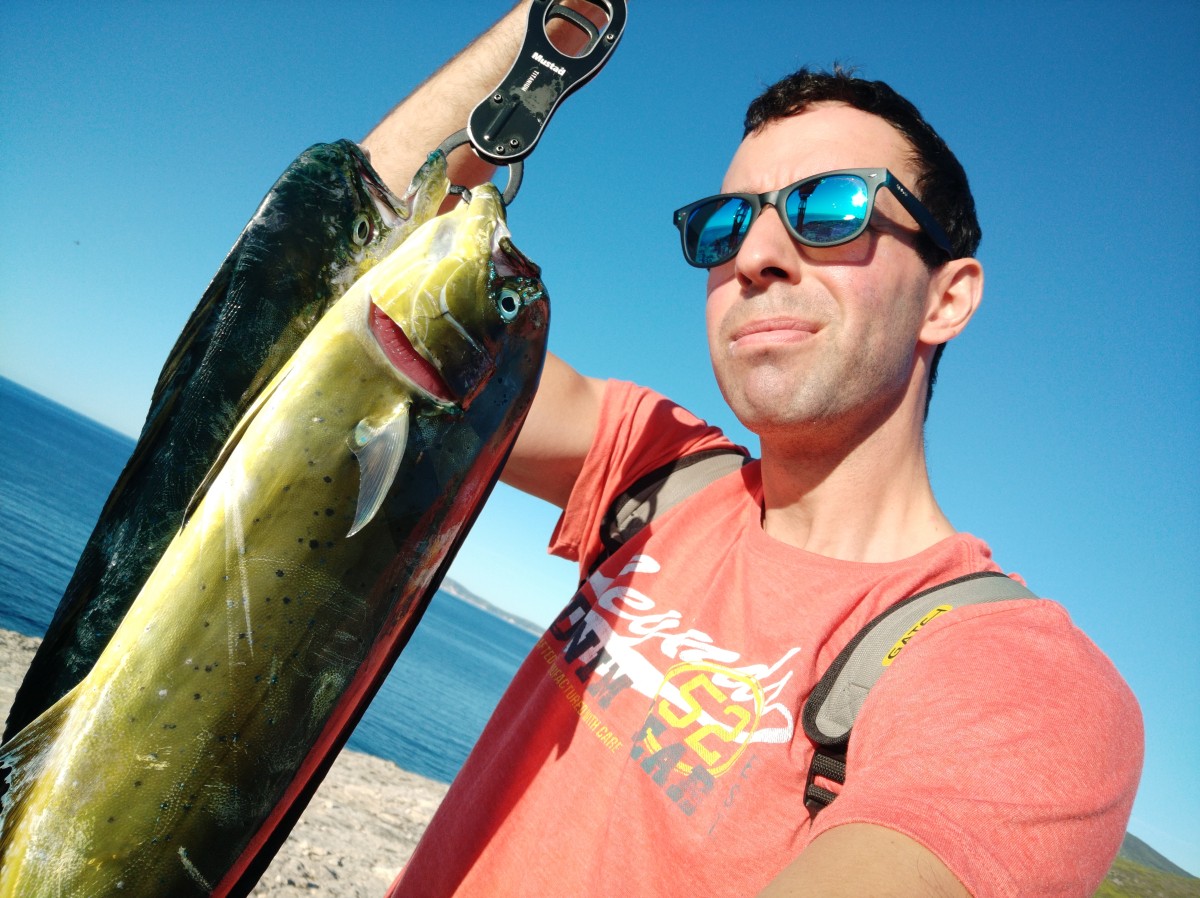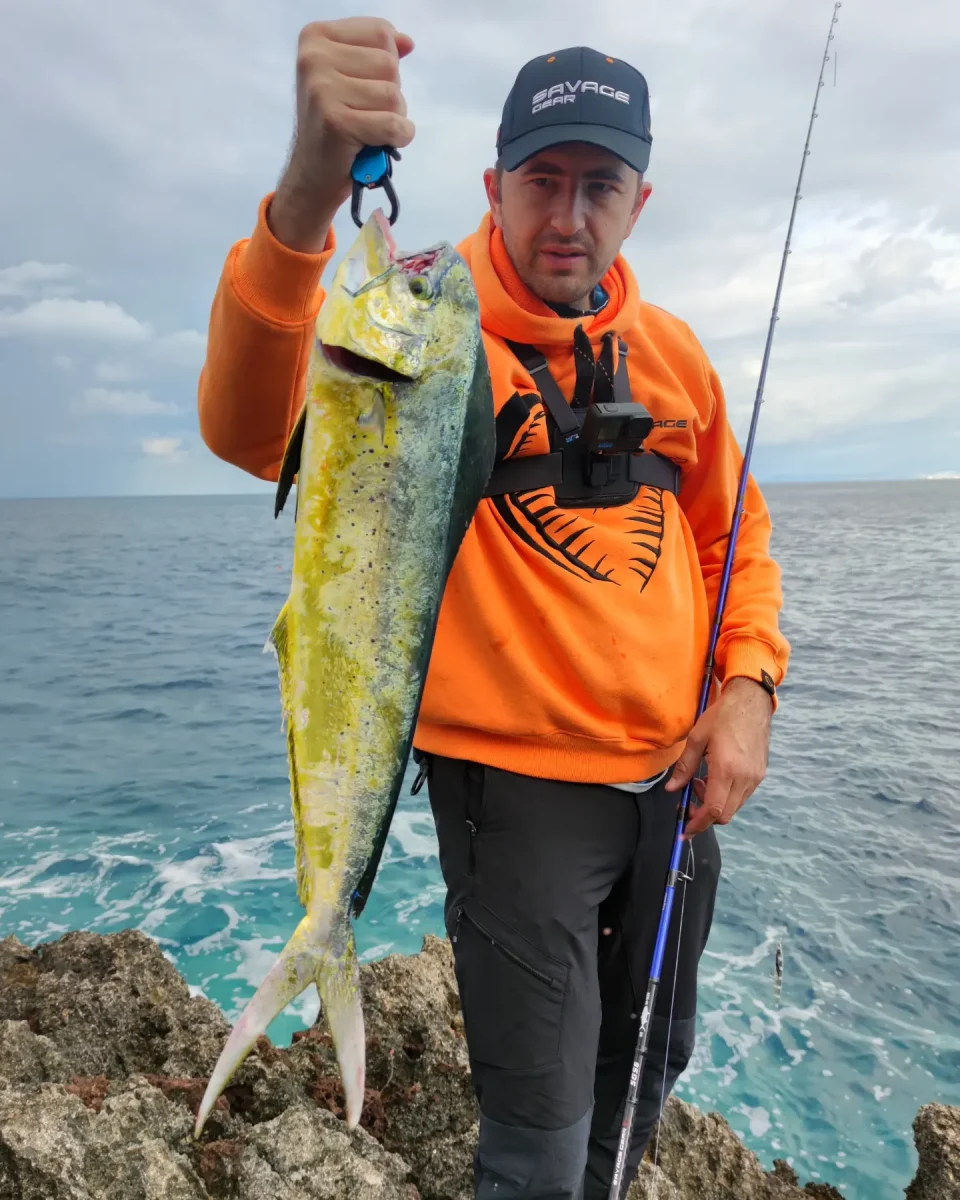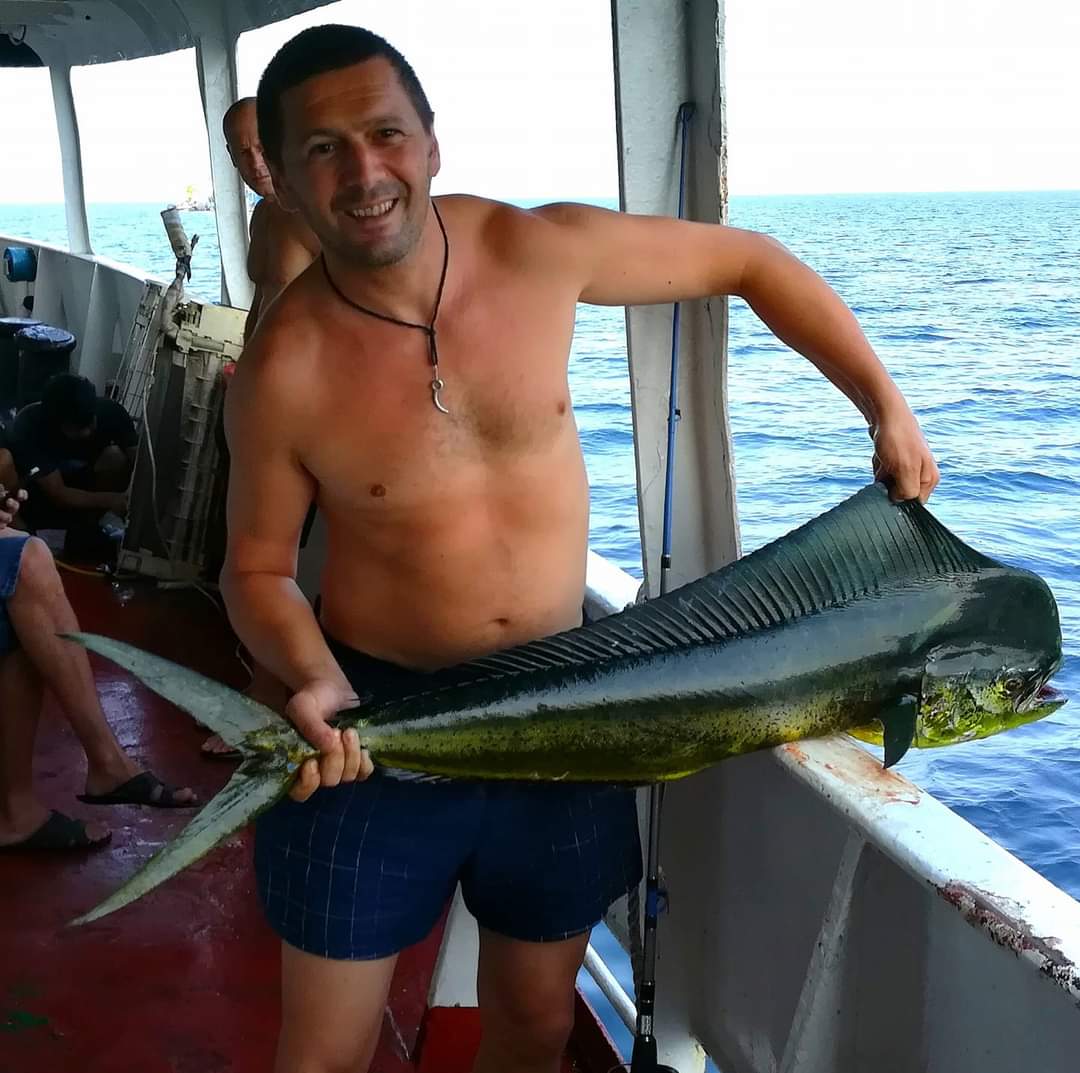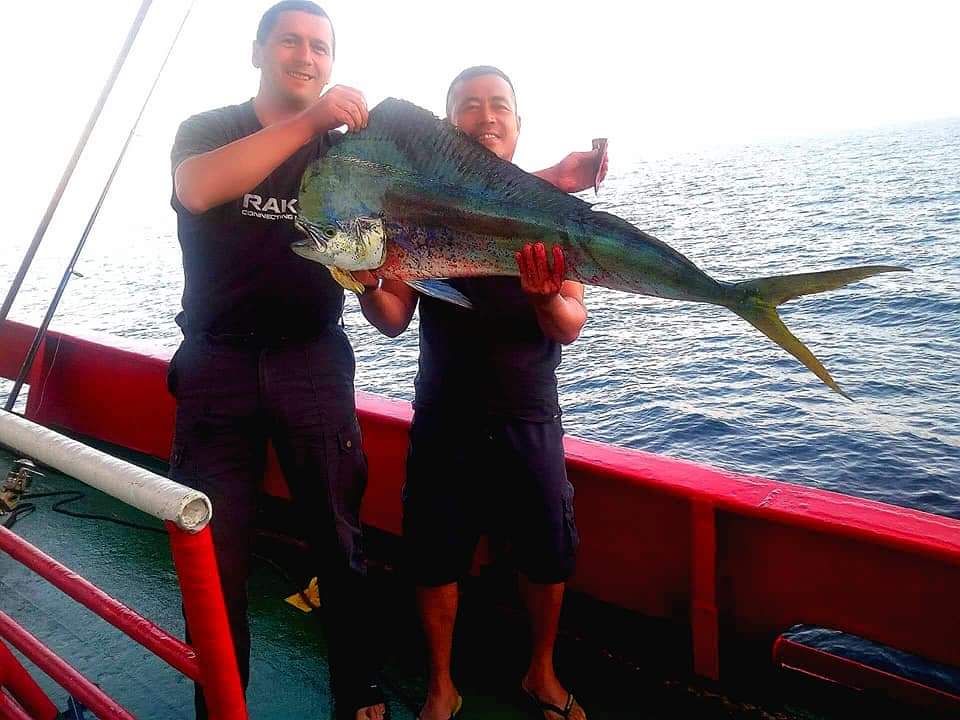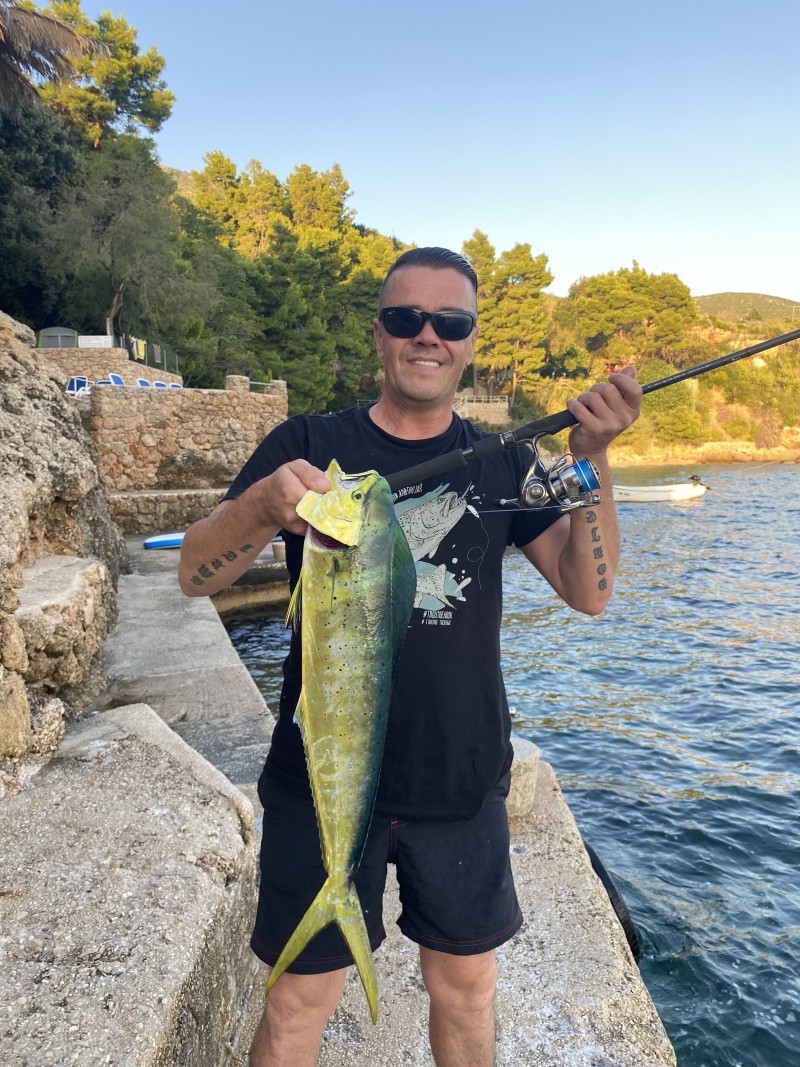Common dolphinfish
(Coryphaena hippurus)
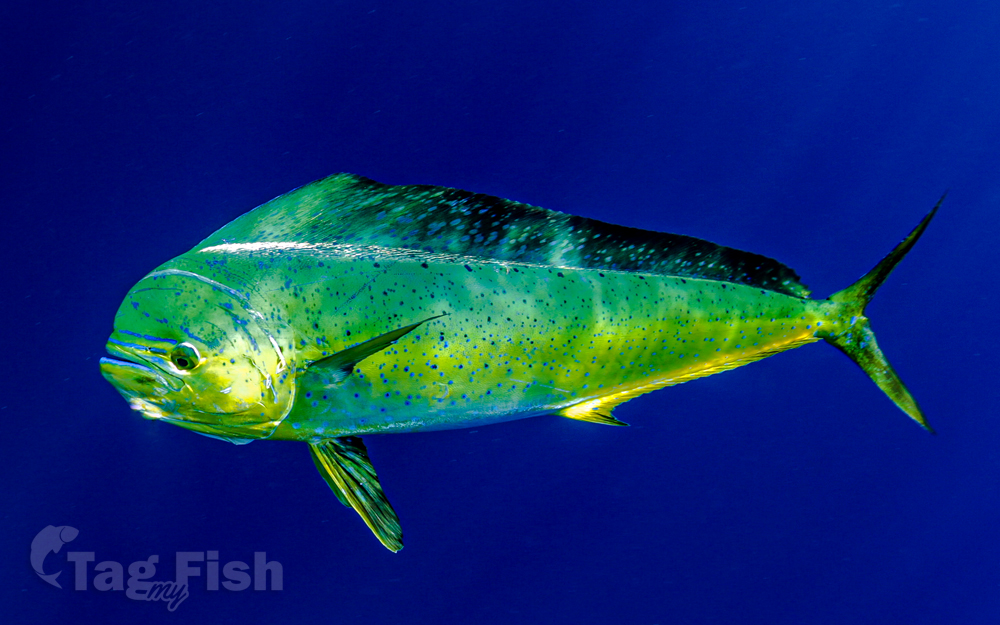
Classification
General data
The common dolphinfish is known by many aliases, including Dorado and Mahi Mahi. This species is beautifully colored – typically bright, blue, green, and gold, almost cartoon-like. It lives in tropical latitudes all around the world and is a favorite target of both sport and commercial fisheries throughout its range.
The common dolphinfish is an open ocean predator that eats small fishes, squids, and pelagic crustaceans. It is also an important prey species for sharks, billfishes, and other large predators. Therefore, much like the skipjack tuna, the common dolphinfish plays a vital intermediate role in open ocean food webs. The males are larger than females and reach lengths of 6.5 feet (2 m) but weights of only 88 pounds (40 kg). Common dolphinfish are excellent swimmers and are known for their ability to capture flyingfishes, their favorite prey. This species’ large, broad forehead is used as an attachment site for the strong muscles that run the length of the body.
Common dolphinfish are extremely fast growing and reach sexual maturity in only 3-4 months. In that span, they grow from nearly microscopic larvae to a foot and a half (45 cm) long and a few pounds. They reproduce through a behavior known as broadcast spawning, where several females release eggs and several males release sperm into the water column, all at the same time. This method increases the likelihood that eggs will become successfully fertilized and that fertilized eggs will not be eaten by egg predators. Throughout a female’s lifetime, she produces millions of eggs, and like with most fishes, older females produce exponentially more eggs than young females and are therefore some of the most important spawners. As common dolphinfish spend most of the year in warm water, spawning occurs intermittently throughout the year.
Though the common dolphinfish is heavily fished by recreational and commercial fishers, its high productivity and young age at maturity have so far protected it from overfishing. Populations are stable and are able to support the heavy fishing. Currently, scientists consider the common dolphinfish to be a species of least concern.
